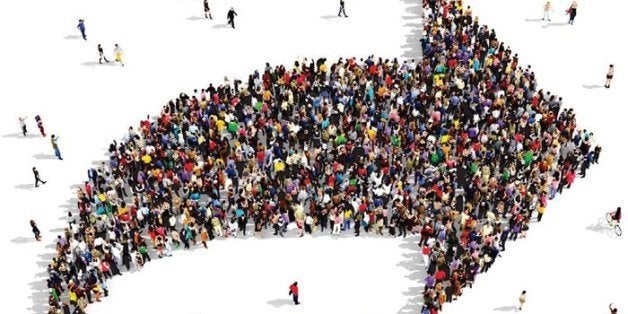
The coming weekend will bring about a pivotal moment for the international-development community.
Over two days, a high-level gathering at the United Nations General Assembly called the United Nations Sustainable Development Summit will formally adopt what has become known as the "post 2015 development agenda."
This new agenda heralds an end to the era of the Millennium Development Goals (MDGs), set to expire at the end of this year, and the beginning of the more ambitious Sustainable Development Goals (SDGs), which will underpin a coordinated global effort to end extreme poverty, fight inequality and injustice, and fix climate change. This time the goals are bolder -- eradicating poverty instead of halving it -- and broader-based. And, above all: they recognize that human progress is possible only when it respects and invests in sustaining the world we live in.
But this transition, naturally, begs the question: Were the Millennium Development Goals even met?
Short answer: not exactly.
By the end of this year, when the MDGs are set to expire, many MDG targets will not be met, and the progress between countries and regions remains uneven.
That said, some targets were met well ahead of the 2015 deadline. The world reduced extreme poverty by half, efforts in the fight against malaria and tuberculosis have shown results, and more than 2.3 billion people now have access to an improved drinking-water source.
So what benefit comes from setting ambitious targets that might not all be met? And what have we learned from our MDG experience?
As we in the evaluation community like to say, focusing on outcomes and impact gives us the information we need to refine and improve the way development is done.
The MDGs rallied the global community around agreed targets and set systems in motion to measure progress. It was the first effort by the international-development community to place measurement, monitoring and to some extent, evaluation, so prominently in the minds of many decision-makers and development practitioners.
Because we agreed on the targets, we were able to take a very close look at how what we were doing affected those outcomes. The past 15 years of experience supporting and evaluating the MDGs has brought about several important lessons.
One is that we need to pool resources from public and private sources in order to meet our development goals. Pooling these resources will require development actors, governments and other players to think innovatively on ways to invest in shared concerns such as climate finance, global-health issues, or fragility and violence.
Secondly, we have to continue to be open to learning from the past and to have systems in place to learn in real-time. That calls for a willingness to fix weaknesses in both the targets that were set, and the systems to track them, as we go along. Getting the targets and tracking right is essential: they signal what's important, whether things are improving or need corrective action.
Third, there has to be a commitment to strengthening statistical capacity, including the data revolution fed by technology and Big Data, so that we have the data we need to underpin our analytical work and assessments.
For the development community and evaluators in particular, the SDGs present several opportunities and challenges that will have implications for our work.
The 17 goals cover many different sectors and aspects of development. One lesson from the MDG experience has already been applied to the SDGs: While the targets associated with the MDGs were shaped over time, after they were adopted, the SDGs already include a list of 169 targets to deepen the goals, and aim for inclusion and equality as well as sustainability.
Another improvement is that the SDGs have much wider and deeper ownership by the global community than the MDGs did, due to broader consultation process.
The SDGs are not limited to just "developing" countries, they are truly global goals that have set the agenda for a better world by 2030. By taking them on, development practitioners and evaluators can make great contributions to the evolution of our understanding of development processes and their outcomes.
This post is part of a series produced by The Huffington Post, "What's Working: Sustainable Development Goals," in conjunction with the United Nations' Sustainable Development Goals (SDGs). The proposed set of milestones will be the subject of discussion at the UN General Assembly meeting on Sept. 25-27, 2015 in New York. The goals, which will replace the UN's Millennium Development Goals (2000-2015), cover 17 key areas of development -- including poverty, hunger, health, education, and gender equality, among many others. As part of The Huffington Post's commitment to solutions-oriented journalism, this What's Working SDG blog series has focused on one goal every weekday in September. This post, published on the day the conference is scheduled to start, addresses all the Goals.